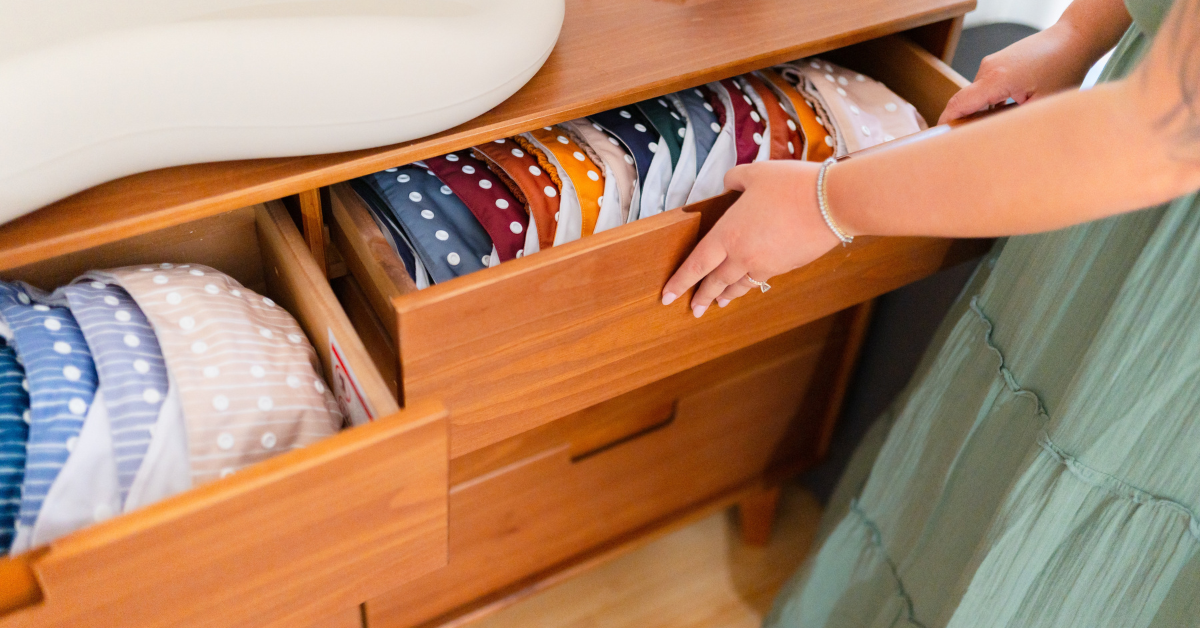
7 Common Cloth Nappy Issues and How to Overcome Them

*Affiliate Links
Choosing cloth nappies for your baby is an eco-friendly and cost-effective choice, but like any parenting decision, it can come with its unique challenges. However, please don’t be discouraged by these common cloth nappy issues; they are manageable with a little know-how and patience.
Leaking
Issue: Leaking is one of the most common issues with cloth nappies. It can happen for various reasons, such as improper fit, insufficient absorbency, or worn-out elastics.
Solution:
- Ensure Proper Fit: Check the fit of the nappy around the legs and waist to ensure a snug but not too tight fit.
- Boost Absorbency: Add an extra insert or booster to increase absorbency, especially for overnight use.
- Replace Elastic: If the elastics are stretched out, replace or repair them to maintain a proper seal around the legs.
- Check PUL: Turn your nappies inside out and check the condition of the PUL. If you can see damage or cracks this is the issue, not your fit etc. You will need to replace any with damaged PUL.
Stains and Odours
Issue: Over time, cloth nappies can naturally develop stains and odours, especially from breastfed baby poop.
Solution:
- Sunlight: Sunning your nappies can naturally bleach stains and eliminate odours. Hang them outside in direct sunlight for a few hours.
- Strip Wash: Strip washing nappies will help to remove detergent or bacteria build-up. You may find that you’ll need to do this more often in a hard water or if your little one keeps getting ill, if they are teething (the saliva can make the urine really stink) or if they are continually getting a nappy rash – most cloth nappy children do not suffer from nappy rash as regularly as those do in disposables so if they start to get rashes it is usually an indication that something is wrong. The process:
- Rinse cycle.
- Wash on 60° with a full dose of detergent on your best wash. If you have super rinse choose this option also.
- Wash on 60° with no detergent.
- Rinse cycle again. If you continue to see bubbles of detergent give it another rinse to fully remove this build-up.
Rashes
Issue: Some babies in cloth nappies may experience nappy rash just as you can do in disposables. There are often factors involved such as not changing often enough, teething or an unwell baby.
Solution:
- Frequent Changes: Change nappies frequently, at least every two to three hours, to keep your baby’s skin dry.
- Use a Liner: Consider using a reusable nappy liner to create a barrier between your baby’s skin and the nappy.
- Choose Natural Fibres: Opt for cloth nappies that are made from natural, breathable fibres like cotton or bamboo to reduce the risk of rashes.
- Strip Washing: Follow method above
Difficulty with Poop Cleanup
Issue: Cleaning poop from cloth nappies can be challenging at times, especially when your baby starts eating solid foods.
Solution:
- Water Sprayer: Invest in a water sprayer, which attaches to your toilet and helps rinse off solid waste before washing.
- Liners: Consider using cloth nappy liners. Poop tends to fall off of these more easily especially from those made from a fleecey material.
- Poop Scraper: Using a dedicated scraper such as a blunt knife or spatula (that you obviously only use for this job) is a far simpler method of cleaning off any stuck on poop.
Ammonia Buildup
Issue: Ammonia buildup in cloth nappies can result in a strong odour and potential skin irritation for your baby.
Solution:
- Pre-Rinse: You could try rinsing your nappies in cold water before the main wash to remove urine and prevent ammonia buildup.
- Use Detergent Wisely: Avoid using too much detergent, as it can lead to residue buildup. Always follow the manufacturer’s recommendations. You could consider using a cloth nappy washing powder.
- Strip Washing: Follow method from above.
Velcro or Popper Issues
Issue: Over time, the Velcro or poppers on cloth nappies may wear out or lose their grip.
Solution:
- Replace Velcro: If you have nappies with Velcro closures, you can often buy replacement Velcro strips or convert them to snap closures.
- Popper Repair Kits: For nappies with poppers, repair kits are available to replace or reinforce snaps that may become loose or damaged.
Overnight Leaks
Issue: Cloth nappies may not always provide sufficient overnight protection for heavy wetters.
Solution:
- Nighttime Nappies: Invest in specific cloth nappies designed for nighttime use, which often have higher absorbency.
- Double Up: Add an extra insert or booster to increase absorbency for overnight wear.
While cloth nappies may present some issues, they are manageable with the right knowledge and solutions. Remember that cloth nappies offer numerous benefits, including cost savings and reduced environmental impact, making them a truly worthwhile choice for many families. With patience and a bit of troubleshooting, you can enjoy the advantages of cloth nappies while ensuring your baby stays happy, comfortable and dry.

Pin for later:





